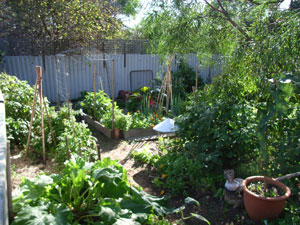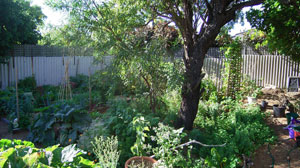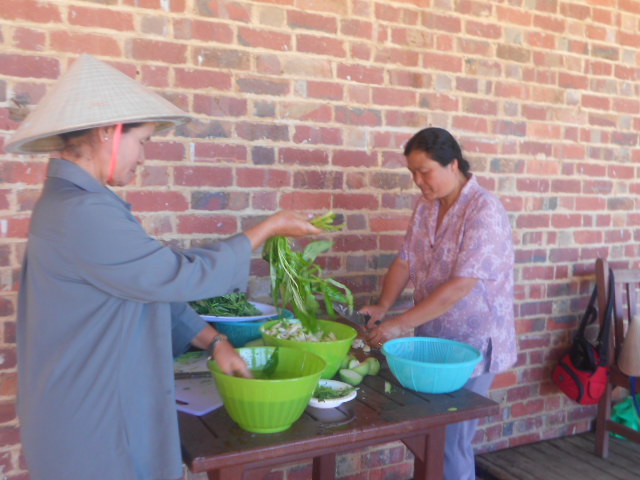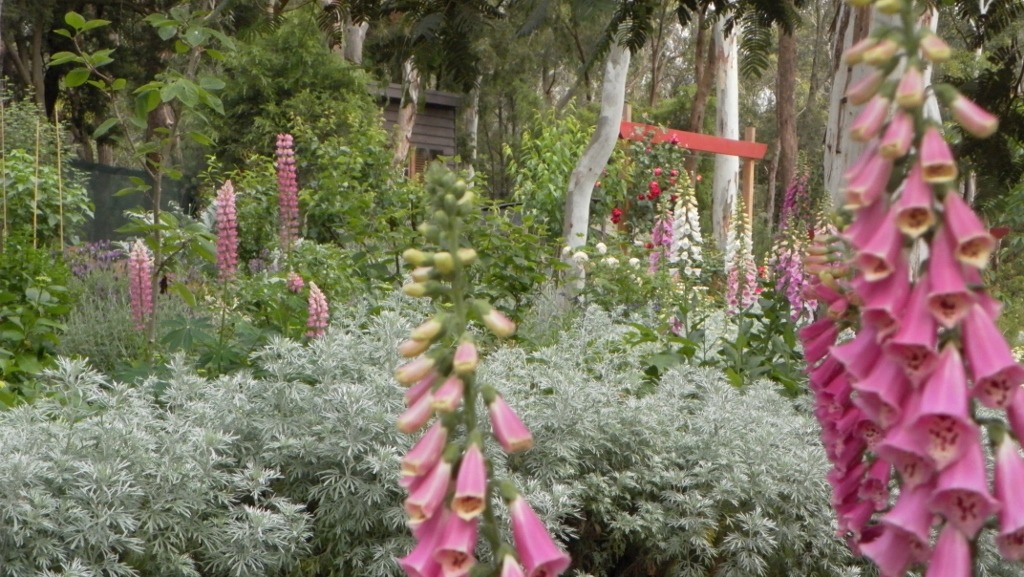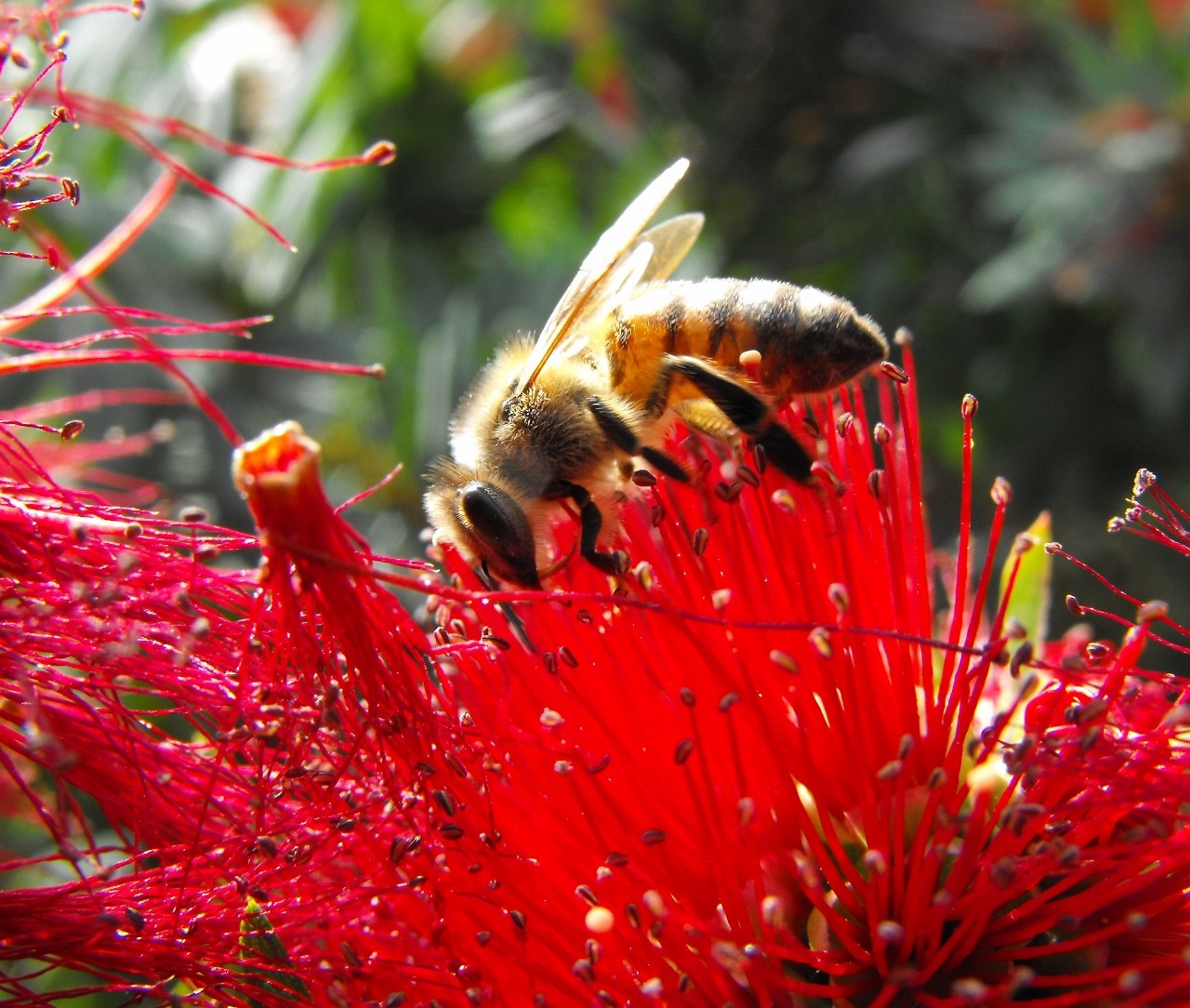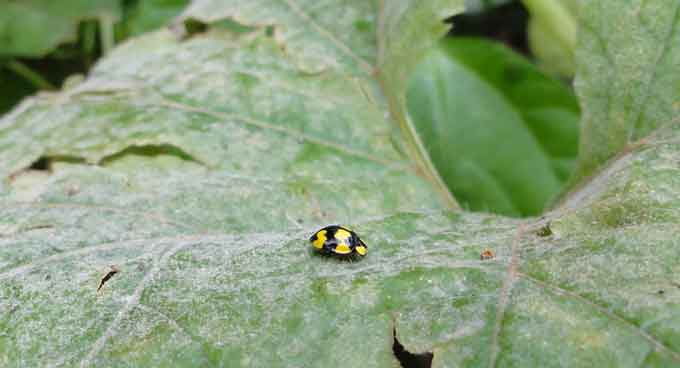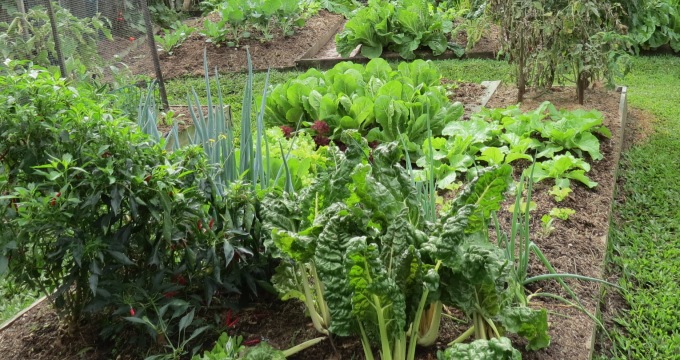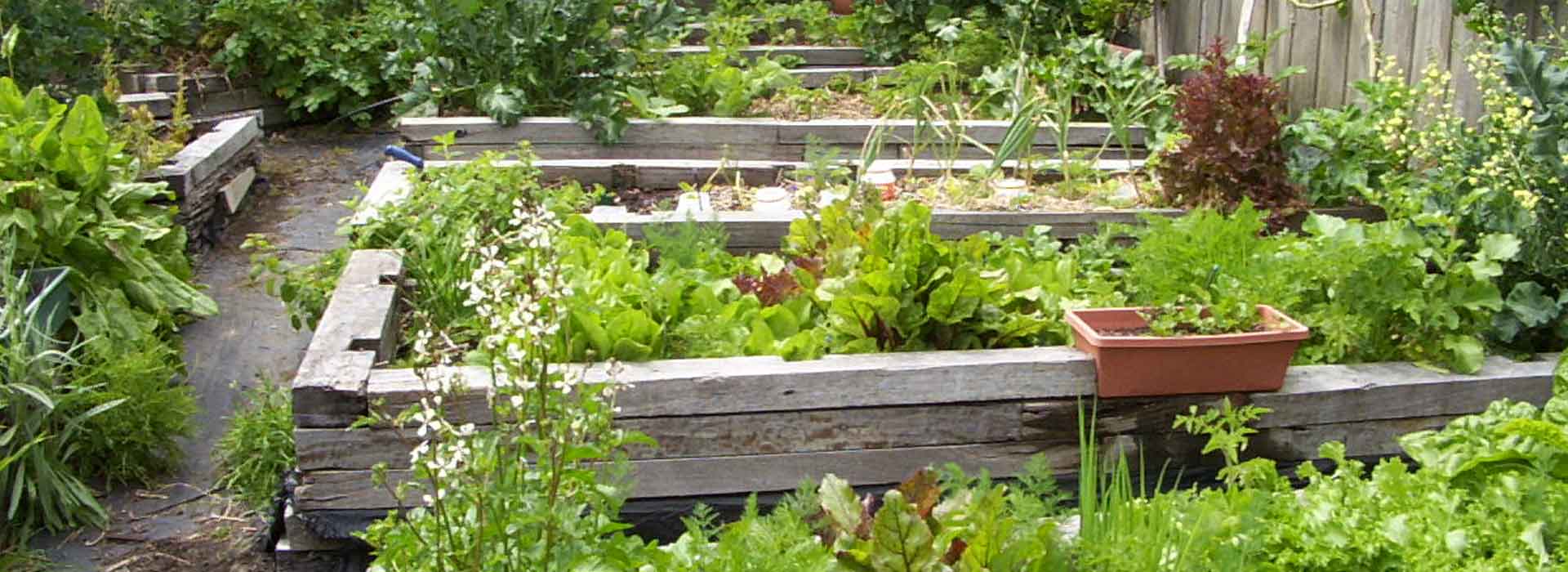A New Life Through Gardening
Part of the pleasure of gardening comes in the sharing of plants, seeds, learning and experience with other gardeners. There are so many stories of people who make gardening their day to day way of life, and their motivation, which very often is the glue that keeps them ‘together’. Our Patron, Jane Edmanson, shares a story of how gardening has contributed to making life sustainable for a vulnerable group of people.
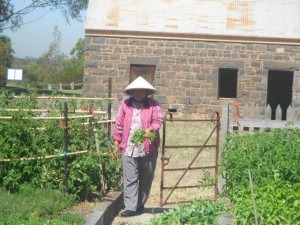
I have had the great pleasure of meeting a group of Karen women, migrants from Burma, who live in the western suburbs of Melbourne, and are now working on a wonderful gardening project at Werribee Park. Many were persecuted by the Burmese military regime and forced to flee to live in refugee camps on the border, some for 22 years. Now they have migrated to Australia, but found life hard due to isolation and lack of English language, many became depressed.
This is where the old kitchen garden at Werribee Park Mansion became important, as a central focus for helping these newly arrived migrants to improved health. James Brincat, Ranger in Charge of Werribee Park, works for Parks Victoria, and is passionate about revitalising this kitchen garden space, and says it has worked a treat. The women come regularly to work on the garden beds, and it is a place they can talk, share experiences and cook a meal together. It was heartening to see the women (and a few men, most are out at work) smiling, chatting and cooking up a storm, and what delicious food they prepared for lunch on the day. All the vegetables and herbs were picked straight from their garden.
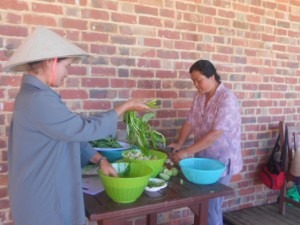 The range is huge: coriander, silverbeet, tomatoes, basil, parsley, chillies, nasturtiums, spring onions, tatsoy, bok choi, lettuces, peas, rhubarb and water spinach. Lots of mustard plants grow as collecting seed is important.
The range is huge: coriander, silverbeet, tomatoes, basil, parsley, chillies, nasturtiums, spring onions, tatsoy, bok choi, lettuces, peas, rhubarb and water spinach. Lots of mustard plants grow as collecting seed is important.
Gardening, harvesting and preparing food has brought people together and it does prove that gardening and sharing really is for everyone.
Story and photo credits: Jane Edmanson
Spring Photo Competition Winners
Congratulations to the three winners of our spring photo competition! A fantastic effort from you and from all the entrants! And thank you to all those who voted on our Facebook page.
In first place is Shane Clifford for a beautiful panorama of his home garden in late spring:
In second place is Tracy Gillard with a busy bee:
And in third place is John Plaxton with a red-cheeked wattle bird on an Echium bloom at breakfast time:
Thank you all for taking the time to capture these moments in nature and sharing them with us.
Powdery Mildew
A warm summer evening, a little bit of moisture, a shady spot in the garden – sounds like a recipe for powdery mildew! Powdery Mildew is a warm weather fungus that will flourish in shady spots with little air circulation and damp conditions. But few simple steps early in the season and a good watering routine will help reduce the risk of this disease attacking your patch or at least lessen the impact if it does.
What Does It Look Like?
Powdery Mildew is a white spotted soft fungus, of which there are numerous varieties. All are powdery in appearance, hence its name. When young, powdery mildew forms as tiny white circles on the leaf, it then reproduces rapidly covering the whole leaf in a white fur. The plant is usually worst affected lower down where it is more humid and sheltered. Mildew will form on the both the upper and undersides sides of leaves and the stem, so the whole plant can become infected. Powdery mildew usually appears in summer and autumn.
Older leaves are covered (especially on the upper surface) with the white powdery fur, young growth that is affected can look a little deformed. Leaves will yellow and die off as the fungus spores enter the leafs surface where the cells remove nutrients.
How does it live and grow?
Powdery mildew loves humid night’s when the temperature is about 15c, especially after a warm day, it just makes the fungus grow and spore. Light breeze’s assists the spores to spread. Particular spots at risk are the dry, warm and shady areas of the garden.
Watering the leaves of a plant in the afternoon increases the humidity at night therefore increasing the likelihood that the spores will spread.
Plants that are particularly susceptible to Powdery Mildew are pumpkin, cucumber, peas, roses, grapes, paw paws, strawberries & apples. There are various types of mildew that can affect different plants, sometimes at the same time. The treatment is pretty much the same for all of them.
Really wet weather, really low (or high) temperatures can reduce the likelihood of your plants suffering from Powdery mildew, though they are things you have no control over. There are some things you can do though to lessen the impact and spread of this furry fungus.
What To Do
- Always water your patch early in the day and ensure the water is delivered at the roots. Watering leaves late on a warm day is an open invitation for powdery mildew to move in.
- Pick up any fallen leaves and dispose of them in the bin, do not compost, most home compost heaps are not sufficiently hot enough to kill off spores.
- Removing the worst affected leaves from the plant may help slow the spread of the disease, plus it will allow for more air circulation.
- When planting out your patch leave plenty of room for each plant, overcrowding means poor air circulation and as we know - powdery mildew thrives where the air circulation is poor.
- Feed your patch with complete balanced organic fertilisers. High nitrogen fertilisers encourage leaf growth and too many leaves leads to – you guessed it – overcrowding and poor air circulation!
- Use a seaweed based plant tonic once a fortnight, it will not only help keep your plant strong, there is anecdotal evidence to suggest that it may help reduce fungal issues too.
- Try a milk spray; (about 1 parts full cream (preferably organic) milk to 10 parts water) and spray it on affected plants. It won’t stop it but it will slow it in it tracks and allow your plant to continue cropping for a few more weeks – always apply any spray treatment in the early morning, otherwise you may be encouraging more fungus.
The black and yellow Fungus Eating Ladybird (Illeis galbula) munches away at the fungus but NOT the leaf beneath! Yes, they’re a gardener’s friend, but definitely not a friend of powdery mildew.
Picture: Elaine Shallue (SGA)
A Queensland Patch
Professor Myles McGregor-Lowndes, Director of The Australian Centre for Philanthropy and Nonprofit Studies at Queensland University of Technology shares his organic patch.
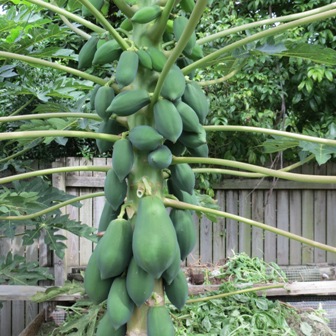
Papaya in fruit, and before the rains came with the inevitable black spot. All one can do is keep the seaweed extract up and remove any diseased leaves as soon as possible. I kept the possums at bay this year by hanging moth balls around the fruit.
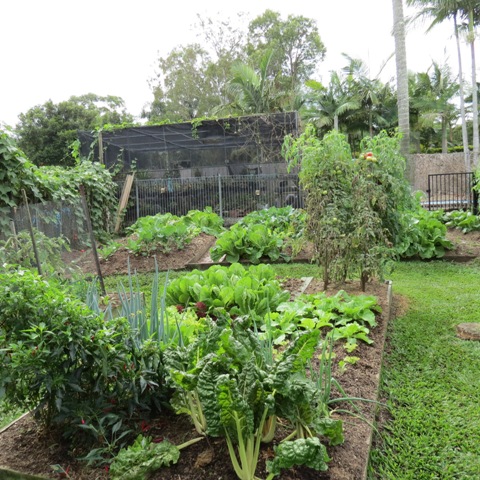
My spring crops include inferno chillies, silverbeet, chokos, chinese cabbage, lettuce, Top Dog tomatoes, spring onions, egg plant and broccoli.
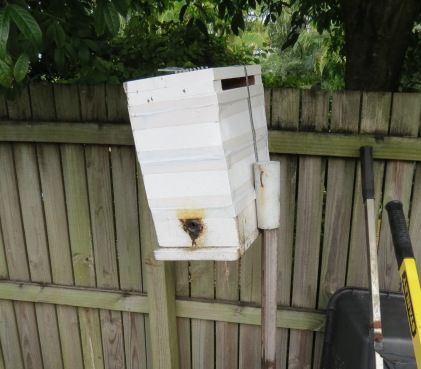
Native bees are just so wonderful to increase pollination rates. There are native bee associations where you can find all the necessary information and tips. They don't sting and so easy to care for once you have the right spot, which in Brisbane is sun until about 10am then light shade.

Douglas the garden dog keeping my newly planted mango safe from any crows which now rarely dare to each my fruit.
If you would like to share your garden check out the submission guidelines and tell us your gardening story.
Weeds: Not in my backyard - Video

Prevent a triffid-style invasion of the worst kinds of weeds. Plants taking over your garden and worse, escaping into our natural areas to create mayhem for native plants and animals. Be alert and be very alarmed, as responsible gardeners do their bit to control the Battle of the Bush.
Grow Your Own Incredible Edibles - Video

Turn your food miles into metres with a backyard full of brag-worthy produce all home grown by you. Produce in pots or bountiful plots, Helen makes it easy to grow fruit, herbs and vegies no matter where you live. Prepare and mulch your soil, planting from seed and seedlings, companion planting, organic pest controls and more. Everything you need to know to get growing your own.
Pickard and McLeod Garden

Fremantle, Western Australia
Landscape architect at the City of Fremantle and Cuttings reader, Giles Pickard, is an inspiration to anyone renting who doesn't think it worthwhile or maybe too expensive to create a sustainable garden.
He was keen to share his experiences with other readers, so we take a tour of his and partner Kate McLeod's latest low budget but high results garden. Check out the size of the zucchini Kate is holding!

This is the seventh time in about 8 years living in Melbourne and now Mosman Park in WA that the pair have created a garden in a rental property. And Giles reckons it's worth every bit of effort for the rewards, and it can be done quickly and quite cheaply too.
These before and after images of the same corner of the back garden show just how quickly it can happen. They were taken about five months apart, and just look at that produce!
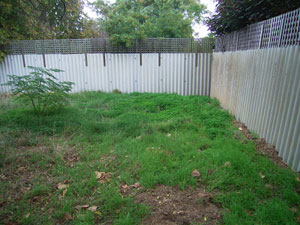
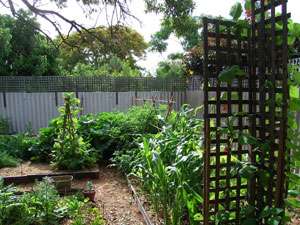
Giles says that they have already been 'reimbursed' the money outlaid on the garden because they had three months continual supply of all the produce they needed during summer.
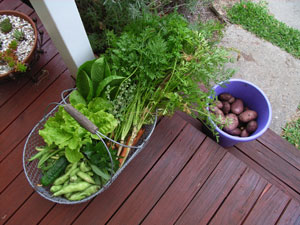
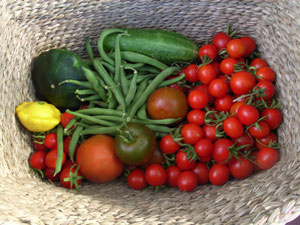
Cheap, Easy and Sustainable
'The soil is the key,' says Giles. 'We brought in about 8m3 of compost to improve the soil and its water holding capacity. The compost Giles and Kate introduced was recycled greenwaste from Biowise. It is produced from council kerbside collections of greenwaste. (BioWise is a joint venture between SITA Environmental Solutions & the Water Corporation of Western Australia. BioWise composts and mulches are made to Australian Standard AS 4454 - Composts, soil conditioners and mulches. For more information visit: www.biowise.com.au)
Kate and Giles also make their own compost. 'No organic waste leaves the property,' Giles says. 'And I even collect the used coffee grounds from a local coffee shop (Blink Coffee, which has the honour of being Fremantle's smallest coffee shop). I provided them with five buckets, which they fill and I pick up on the weekends. I even made a poster for the shop, which they have put up in their window.'
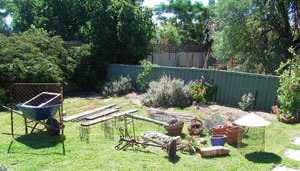
Recycled Materials
Giles and Kate built small raised garden beds from materials found on roadsides. Shown here are the results of a collecting trip!
'All the timber and even the lattice in the photos came from roadside pickups,' says Giles. 'The paths are topped with sawdust. We collect that from a local timber yard for free.'

Even an old Webber barbeque gets a new lease of life by Giles and Kate.
'Many of the plants are from friends as cuttings and seeds,' he says. 'Although we did buy a number of fruit trees for this garden, as it's quite large. But I figure, the money we spent on the trees was what we would spend on a concert ticket.'
'And before we left Melbourne we sold about 500 plants as we couldn't take them with us. This gave us some money to spend on the garden here.'
And there's nothing like rallying friends to help either! Giles and Kate are having a working bee to dig up the front lawn.
'Everything here is grown totally organically, so I didn't want to use herbicide to get rid of the lawn.'
Water
Giles has designed the garden to capture all the stormwater too.
'Out the front we'll be diverting stormwater into a drainage swale and onto the nature strip.' Giles is installing a drip irrigation system. It's about the only material in the garden that's not recycled and the most 'capital intensive', so they are installing it in stages. It and the electric lawn mower are the only items that require power, but even then they use green power.
Giles offers some more tips for being as sustainable as possible. 'Use your lawn mower as a mulcher to speed up the composting of waste material and ask your neighbours if you can rake their autumn leaves up to use for mulch and composting.'
The next task on their agenda is to get some chooks, then Kate and Giles will be even more self sufficient in the produce department - not to mention fertiliser and pest control!
Other Benefits
Since the garden was established, Giles and Kate have noticed that they are now attracting a variety of wildlife to the garden.
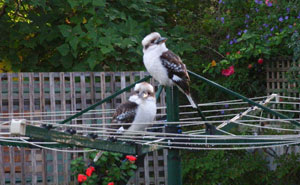
'We now have blue tongue lizards, frogs have moved in, and there's lots of birdlife. Kookaburras sit on the clothes line, there was a peregrine falcon flying overhead recently and there are pink galahs nesting close by.'
'Putting in gardens wherever we have lived has led to some happy landlords, as their property is improved. This in turn has led to some glowing references which has helped us in tight rental markets,' says Giles.
These photographs, the most recent, show the garden in autumn 2008 - a year since they began work. The next shot shows their garden looking south, and the final one their garden looking north.
